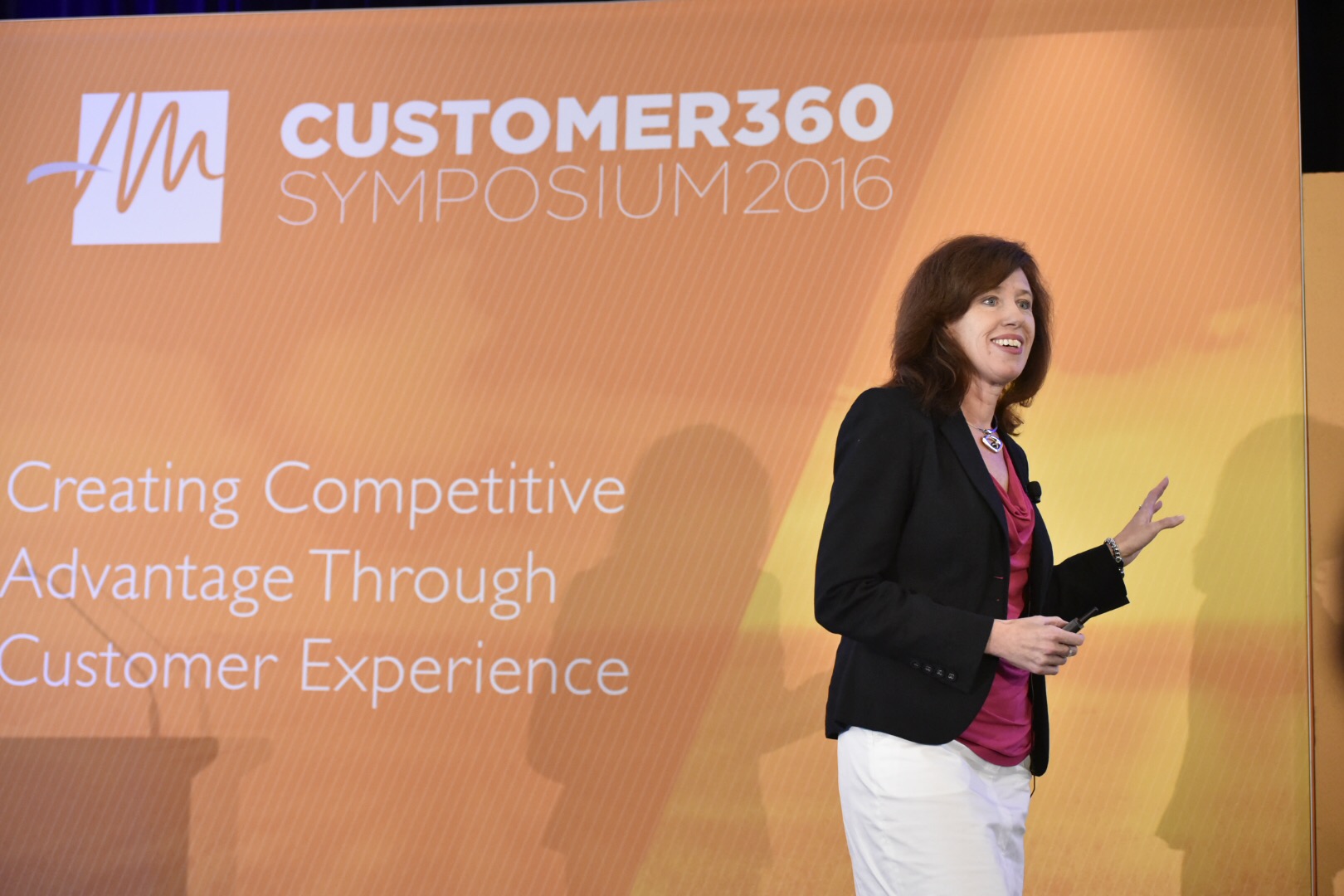
3 MINUTE READ
Organisations need to be adaptive in order to deliver on customer experience promises and Kate Christiansen, author of The Thrive Cycle, has made it her personal mission to help them get there.
In 2014, Christiansen left her established corporate career of more than 20 years, she told the Customer 360 Symposium, to “create a world in which change is something to be embraced and not feared. Where the ability to adapt is the norm, not the exception and where change is something that energises people rather than exhausting them”.

During her time in what she calls “organisational no man’s land” which she explained as “the white stuff around the boxes” you see when looking at an organisational chart, Christiansen worked with organisations that were structured vertically as she helped them to function horizontally and work holistically. In the process, she saw the consequence of poorly implemented change.
“So often what had started out to be, ‘Hey, we’re going to create all this value for customers. Hey, we’re going to change the customer journey and do some really fabulous things for our customers,’ actually never came to fruition. And often change that set out to create value for customers eroded value,” she said.
While researching this issue, Christiansen identified what she calls “the adaptive dilemma”. Put simply, the adaptive dilemma is the challenge plaguing organisations struggling to adapt to fast paced change happening outside of the business. Most at risk are organisations that see adapting as costly and relentless yet know that if they are unable to keep up, they’ll be facing a significant disadvantage in the not too distant future.
There are several causes at the root of this problem. Firstly, the word “adaptive” means different things to different people and so there’s no shared basis to discuss, develop or measure adaptiveness. Second to that, no one person or department is in charge of driving this within the organisation. The combination of these factors means the business isn’t able to move forward and instead is falling further behind.
To help those stuck in this place, Christiansen developed the Thrive Cycle.
What is The Thrive Cycle?
The Thrive Cycle is a framework developed to guide teams as they adapt to change. Christiansen suggested we think of it as “adapting fitness for your organisation”.
In practical terms, the Thrive Cycle begins with the organisation seeing the change taking place. Christiansen said: “Sometimes a change comes along and you think, ‘Oh, that’s an opportunity.’ You might also think it is a threat. In order to be able to see the opportunity, your organisation needs to see the change, explain it to others and convince them this is a good change.”
The next step is to embrace the change and make it part of the agenda, to establish a plan for how to tackle it. “This is a step that is so frequently missed within organisations. Everyone is so enthusiastic about getting to the solution,” said Christiansen. The planning aspect of handling change is key with Christiansen saying this should be viewed as a communication device.
“You can see how it keeps a structure to a conversation that is otherwise quite nebulous and fluffy,” said Christiansen. “The point is understanding your organisation, understanding where it is, and how adaptive it is, and why it is that way. When you have the Thrive Cycle in your organisation, this is how can you measure adaptiveness in a meaningful way. You can use it as a benchmark.”
Inside The Thrive Cycle
Once there is a plan in place, the organisation needs to get moving which Christiansen said is “the fun bit”. But more importantly, businesses need to watch and learn.
“Learn from experience so that next time you see it better, you see it faster, you see it before your rivals see it,” said Christiansen. “Do you see the customer insights, do you see the changes in your organisation and the customers and stay relevant to them?”
Of course, most businesses aren’t simply dealing with one change at a time. Often there are multiple changes at various stages all having an impact.
Ultimately, the businesses that will thrive through all of this are the ones that develop a capability to see and understand opportunities which presents an opportunity in and of itself for the customer experience field. According to Christiansen, the Thrive Cycle is very much powered by customer experience professionals who are able to identify the opportunities within change and the value that can be created for the customer.
“You see that this opportunity is important and that we should do something about because you understand how you create that value for your customer in the first place,” said Christiansen. “This all comes back to the customer experience work you are doing. If change is not driving and improving customer value, or driven by customer value, it’s erroneous. Because the customer goes to the side and the change goes straight on through.”
About Kate Christiansen - author, The Thrive Cycle
Kate is the creator of The Thrive Cycle, a framework that enables organisations to define, develop and measure adaptive capability in a relevant way. She is also a co-founder of The Adaptive Advantage, a business author, keynote speaker and consultant who works with leaders within medium to large, complex organisations.
